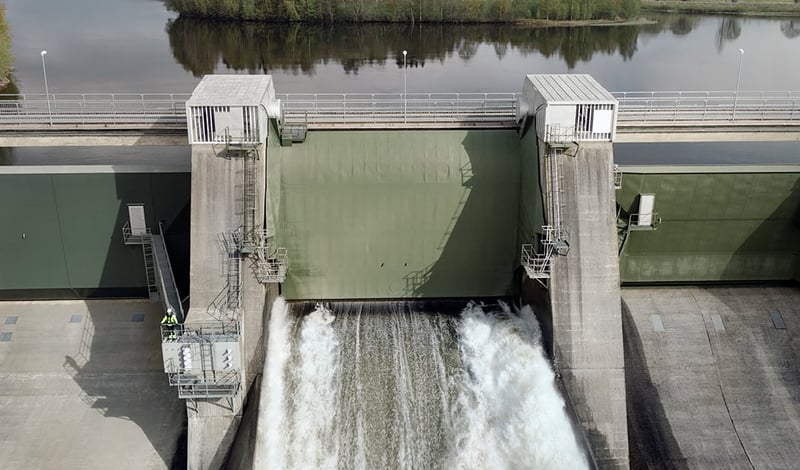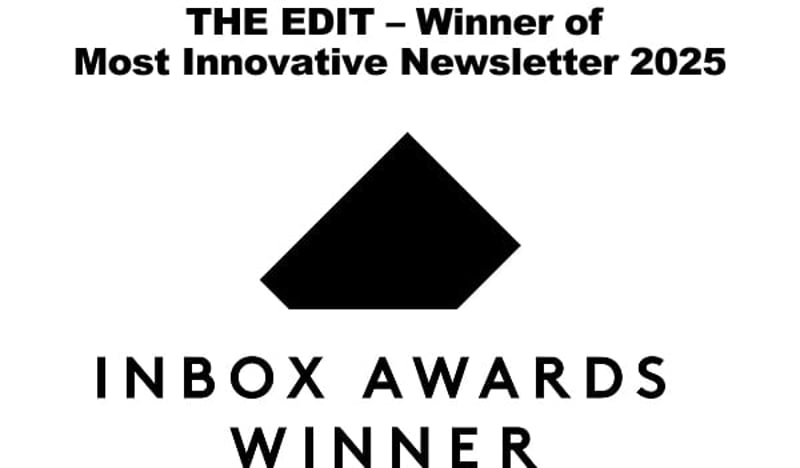THE EDIT
Your monthly briefing on the journey to fossil freedom
Issue #29, Progress in practice, December 2025

Vattenfall's hydropower plant in Stornorrfors, Sweden. Photo: Vattenfall
Historic moment for fossil-free steel engineering
What to know: A giant, 21-metre wide, dam gate weighing in at 120 tonnes is on its way to Stornorrfors hydro power plant in northern Sweden – built entirely from fossil-free steel within the HYBRIT collaboration between Vattenfall, SSAB and LKAB. When installed in 2029, it will be the largest object so far using steel made with near-zero fossil carbon dioxide emissions in the iron production.
Why it matters: Steel production is one of the world’s biggest sources of CO₂ emissions. The HYBRIT technology could eradicate these by replacing coal with fossil-free hydrogen in the production process. As sectors like automotive and construction shrink their operational footprints through electrification and more efficient buildings, attention shift to the materials themselves. Projects such as this dam gate show what is already feasible.

Concept illustration: Vattenfall
The second life of wind turbines
What happens after a wind turbine spins for the last time? With over ten thousand components, many of them built to withstand decades of harsh weather conditions, each turbine offers parts that can keep delivering value in less challenging environments. From electronics turned into EV chargers to turbine blades repurposed as floating habitats, Vattenfall’s Rewind initiative explores how discarded parts can serve new purposes – across construction, agriculture, e-mobility and the energy grid. The concept was brought to life at Dutch Design Week 2025, where Vattenfall, together with designers and engineers, demonstrated how reuse can be both practical and imaginative.
Coal's not cool

The process of phasing out coal needs to speed up, according to the State of Climate Action 2025 report released ahead of COP30. The report states that the world needs to replace coal power plants ten times faster than it does now, while also halting all planned new plants (systemschangelab.org).

Annika Ramsköld, Vice President Corporate Sustainability at Vattenfall. Photo: Vattenfall
COP30: "Not the result I hoped for, but progress continues"
The UN Climate Change Conference in Brazil ended without a plan for phasing out fossil fuels, but there are many other positive signs and initiatives that point in the right direction. And for Europe, there are now clear drivers for the transformation towards fossil free energy, Vattenfall’s Vice President Corporate Sustainability, Annika Ramsköld tells THE EDIT.

News flash
3 x quick updates from the energy world

Photo: AI-generated
The final frontier
To make the energy transition work, we need to look beyond the obvious. Could space-based solar power—satellites with solar panels in orbit – be one option?(weforum.org)

Photo: AI-generated
Fusion compensation
The increased use of AI will put even more pressure on the energy system. To compensate for that, more and more AI companies are now exploring and financing fusion technology. (time.com)

Photo: Adobe
Three hours of sun
Australia’s Labor Party is trying a new way to shift energy consumption. In three states, homes with smart meters will be offered three free hours of solar power per day when energy demand is usually low. (theguardian.com)
And finally …
The beer trip
Spanish brewery Ambar and logistics operator Carreras are collaborating to reduce Ambar’s CO2 emissions. In a joint, three-month-long pilot project, the two companies are transporting beer with hydrogen trucks. Together, they hope to reduce emissions by 30 tonnes. Commenting on the test, Ambar’s communications director, Enrique Torguet, told the news site Fuel Cell Works: “We want the beer to arrive not only freshly packaged but also with fewer emissions. This test will allow us to understand the practical, day-to-day logistics of hydrogen technology.”

